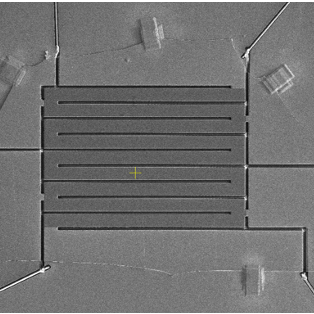Research overview
We are dedicated to understanding quantum materials, where countless interacting electrons yield new states that are greater than the sum of their parts. We aim to uncover the underlying principles driving such emergent phenomena, one material at a time. Symmetry is a powerful organizing principle, with the ability to inform and constrain theoretical descriptions of materials and predict their observable behaviour and functional properties.
Our approach centres on a symmetry-sensitive toolkit that combines three core experimental techniques: optics, transport, and angle-resolved photoemission spectroscopy (ARPES). These complementary techniques allow us to detect subtle symmetry-breaking phenomena and understand their causes and consequences. Our tools adapt to a range of material types, from large single crystals to atomic monolayers, ensuring that we can tackle a broad spectrum of interesting problems.
Research themes

New optical probes of symmetry breaking
Optical methods are invaluable for probing symmetry, thanks to the ease of tuning light polarization. Our group is using and developing optical probes of symmetry, finely tuned to reveal specific and valuable information about symmetry-broken phases. For instance, we have recently developed a probe of time reversal symmetry (TRS) breaking that helped uncover a new type of magnetic order. We will expand on these techniques by combining them with uniaxial strain and magnetic fields. This unique approach will allow us to identify, image and control complex magnetic order parameters, as well as to explore their dynamics and critical behavior across a broad range of length scales (5mm-0.5µm) and timescales (1s – 1ps).

Symmetry-sensitive transport experiments
As valuable as optical methods are for detecting symmetry-breaking, they are not directly sensitive to states at the Fermi level. However, in some instances we specifically want to know how broken symmetries affect those states – after all, they might be the ones driving the symmetry-breaking phase transition in the first place. We will therefore employ transport equivalents of optical probes of symmetry. These experiments demand precisely fabricated samples with finely controlled geometry, a challenge we will meet using ISTA’s state-of-the-art nanofabrication facilities. By combining transport and optical probes, we’ll take this further, investigating domain wall resistivity and gaining deep insights into how symmetry breaking shapes electronic behavior.

Symmetries in momentum space
Symmetry is often considered in absolute terms – it is either present or absent, and it constrains the range of properties a material may exhibit. However, the strength of coupling between symmetry breaking and relevant electronic states may cause materials belonging to the same symmetry class to exhibit strikingly different phenomena. We will therefore, in addition to the symmetry classification obtained through optics, pursue the understanding of the energy scales associated with symmetry breaking. We will image the symmetry-induced changes of electronic structure in momentum space using angle resolved photoemission spectroscopy (ARPES), getting detailed microscopic information about the causes and consequences of symmetry breaking.
Material systems we are currently interested in, and why
Materials with strong coupling of magnetic and electronic degrees of freedom
Electronic and magnetic degrees of freedom can strongly influence each other – itinerant electrons mediate magnetic interactions, while magnetism results in (sometimes rather intricate) momentum-dependent changes to the electronic structure. This coupling challenges standard ways of modelling materials, where one dominant degree of freedom is thought to ‘drive’ the physics. We will combine probes of symmetry with those of electronic structure to identify the symmetries of the magnetic state, and reveal both its causes and consequences.
Two-dimensional (2D) magnets
Over the last few years we have seen drastic improvements in the ability to isolate materials as thin as a few atoms, which suddenly enabled the study of fundamental questions that used to be experimentally inaccessible. One of those questions is the nature of two-dimensional magnetism: how different is the magnetism in thin 2D flakes from that in 3D bulk crystals? A major challenge in this endeavor is the fact that most of the probes used on 3D bulk crystals do not work well with 2D flakes. Fortunately, this is not the case with optics! We will use a range of probes of symmetry and susceptibility to explore the critical behavior, order parameters and magnetic excitations in 2D.
Chiral materials
Chirality is found in animals, plants, biomolecules and high-energy astrophysics alike, as well as in quantum materials. Despite its ubiquity, and the well-known definition (a chiral object has no mirror symmetry), chirality itself is a topic of active fundamental research. How to quantify chirality, and whether one system can be ‘more chiral’ than another are fascinating open questions. We will employ a combination of optical and electrical probes to both detect and control chirality in quantum materials. We are particularly interested in its coupling to the spin degree of freedom.
